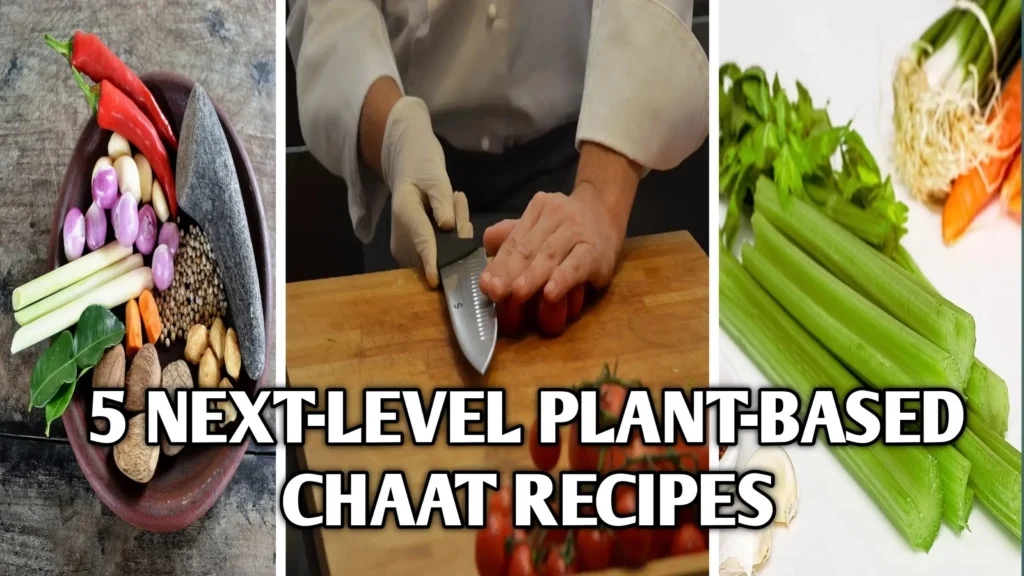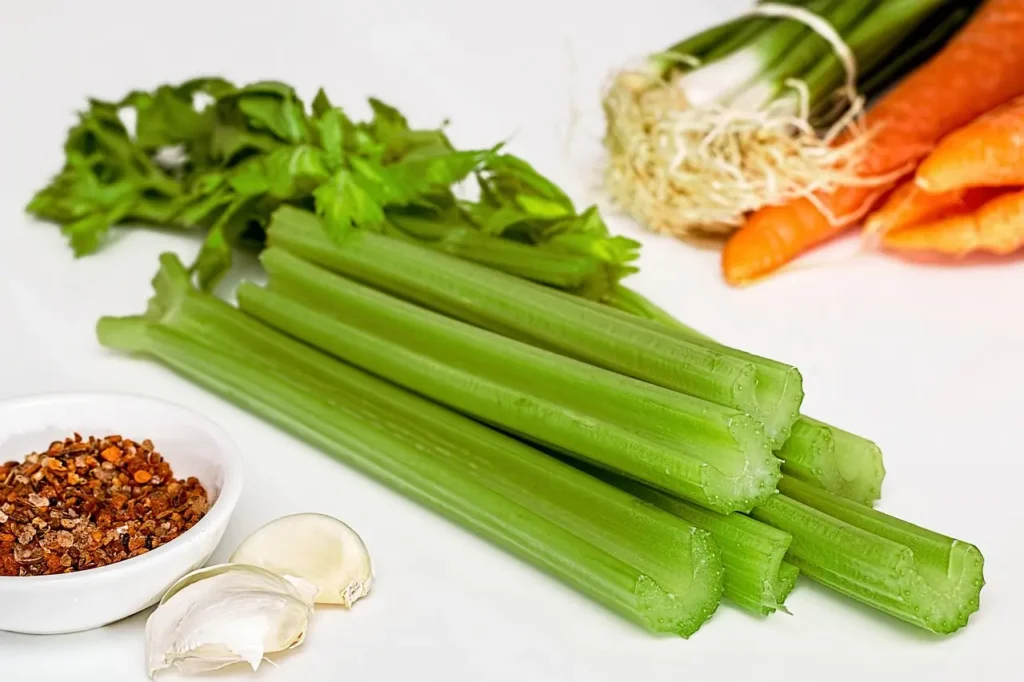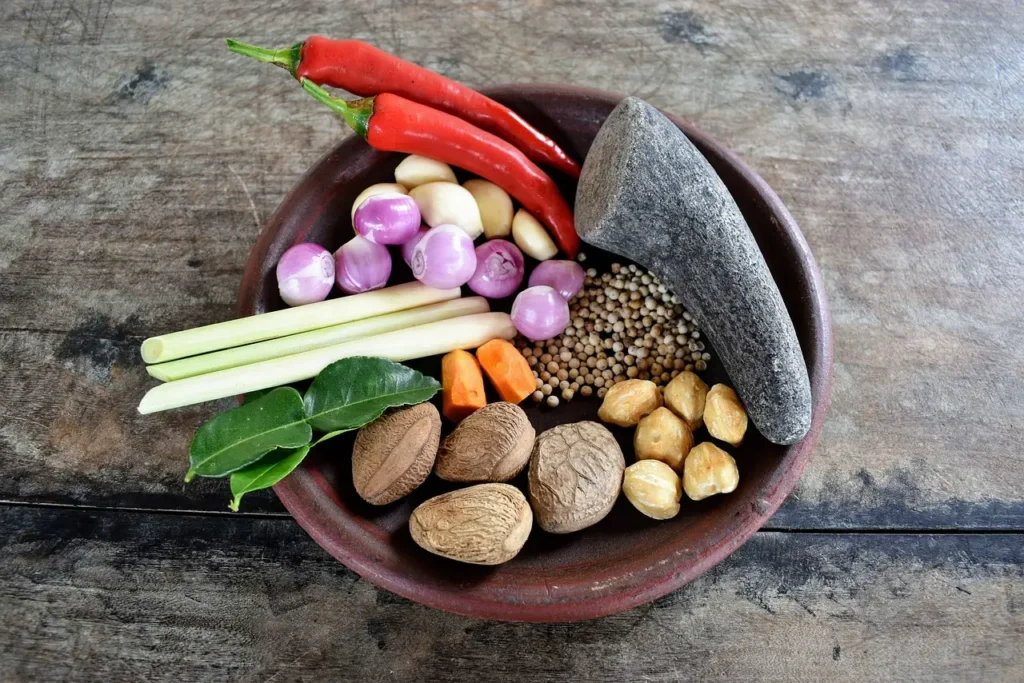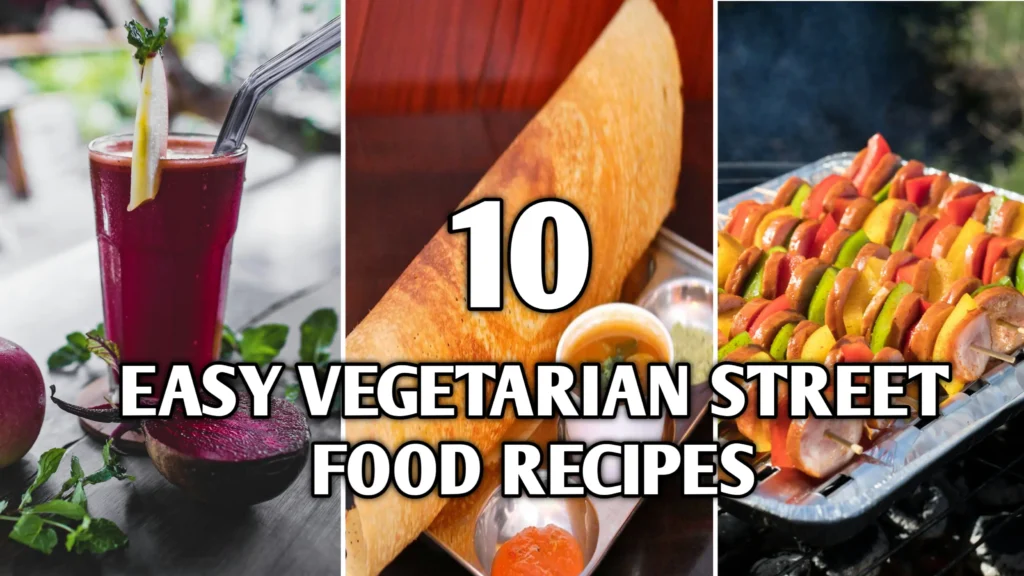
Introduction
There’s something magical about the sizzle, aroma, and vibrant colors of chaat wafting through bustling street markets. Now, imagine that familiar rush of tangy tamarind, crispy puris, and lush coriander—reimagined with entirely plant-based ingredients and creative global twists. Plant-based chaat recipes have emerged as the next-level vegan street food fusion, captivating foodies, health enthusiasts, and even die-hard chaat purists around the world.
In this post, we’ll dive deep into the irresistible world of vegan chaat: from its rich history to its innovative modern reinventions, from tried-and-tested base recipes to exciting global fusion experiments, and—from quick tips to FAQs—you’ll walk away ready to whip up sensational plant-based chaat at home or elevate your restaurant’s menu. So grab your mixing bowl, stock up on spices, and let’s explore this gastronomic revolution! 🌿🍴
1.The Rise of Plant‑Based Chaat Recipes in Global Street Food Fusion

The chaat counter has long been a temple of flavor in Indian street food culture, but today’s food landscape is radically shifting. Plant-based chaat recipes aren’t just a passing fad—they represent a broader movement toward sustainable, animal-free eating that still celebrates the sensory explosion we’ve come to love in vegan street food fusion. Authentic plant-based chaat street food offerings, from Mumbai’s roadside stalls to hip Brooklyn food trucks, are winning hearts by combining classic spices with ingenious dairy and meat substitutes.
As more cooks experiment with lentil “meats,” coconut yogurts, and nut-based cheeses, vegan chaat transcends boundaries and cultures—becoming a global phenomenon. This isn’t simply about subbing out dairy; it’s about crafting new textures, tastes, and traditions that push chaat into exciting frontiers.
2.Understanding Chaat: History, Anatomy, and Vegan Potential
Chaat’s origins trace back to the lively bylanes of Old Delhi in the 17th century, where roadside vendors married sweet, salty, sour, and spicy elements into a single dish meant to awaken the palate and spirit. Common ingredients—crispy puris or sev, boiled potatoes, chickpeas, yogurt, chutneys—combined into a mosaic of taste and temperature. However, the classical yogurt and paneer versions are naturally off-limits for strict vegans. That’s where plant-based chaat recipes come to the rescue: vegan chaat harnesses plant derivatives—silken tofu for creamy tang, cashew yogurt for lushness, aquafaba-whipped creams for light billows of foam—to recreate chaat’s signature balance.
Understanding each component’s functional role (crunch, binder, sauce, garnish) empowers chefs to innovate without losing authenticity. By examining the anatomy of a perfect chaat—base, body, sauce, crunch, herbs, and spices—we see endless room for plant-based creativity.
🌿 What Is Vegetarianism?
Curious about the roots and variations of a vegetarian lifestyle? Learn the history, types, and benefits of vegetarianism in this detailed overview.
📖 Learn About Vegetarianism3.Core Plant‑Based Chaat Recipes: The Building Blocks

Whether you’re new to vegan chaat or a seasoned fusion foodie, mastering foundational plant-based chaat recipes is essential. Below, we detail four core templates—each adaptable to personal taste and global influences.
1. Classic Pani Puri with Mint-Coriander Aquafaba Foam
Forget dairy-based pani puri. Swap the yogurt for whipped aquafaba foam scented with mint, coriander, and green chili. Fill puris with spiced potato-mung bean mash, top with zesty tamarind-date chutney, and finish with that airy foam for a modern, Instagrammable treat. This version exemplifies how plant‑based chaat can be both nostalgic and novel—capturing the essence of pani puri while embracing vegan ingenuity.
2. Papdi Chaat with Cashew “Yogurt”
Roasted papdis (crispy flour crackers) serve as a sturdy canvas for sprouted mung beans, diced tomato-onion relish, and creamy cashew yogurt infused with lemon and probiotic cultures. Layer on green chutney and spicy garlic chutney, then sprinkle pomegranate arils, sev, and chaat masala. The result is a symphony of textures: crisp, creamy, juicy, and chewy, all without a drop of dairy.
3. Bhel Puri Tacos: Fusion Meets Street Food
Here’s a global spin: take the orange-mango-pepper salsa concept of Mexican pico de gallo and merge it with the crunchy sev–puffed rice mix of bhel puri. Serve inside mini soft corn tortillas, drizzle with coconut yogurt, and garnish with fresh cilantro and lime zest. This cross-cultural chaat demonstrates how vegan street food fusion—combining bhel’s airy crunch with taco’s portability—opens doors to new flavor frontiers.
4. Aloo Tikki Burger with Tamarind BBQ Sauce
Elevate the humble aloo tikki to street food royalty by sandwiching it in a brioche-style plant-based bun with tangy tamarind BBQ sauce, rocket greens, pickled red onions, and smoky paprika mayonnaise (vegan, of course!). This isn’t traditional chaat per se, but it harnesses all chaat’s flavor tropes—sweet, sour, spicy, and crunchy—in a hand-held package that amazes the palate.
4.Global Inspirations: Reimagining Chaat Across Continents

While the above core recipes pay homage to chaat’s Indian ancestry, plant‑based chaat street food has spread far beyond the subcontinent, absorbing influences from Asia, the Americas, Europe, and Africa. Let’s journey through five global chaat fusion experiments that showcase the versatility of vegan chaat.
1.Southeast Asian Som Tam Chaat
Inspired by Thai green papaya salad, this version swaps fish sauce for tamari and dried shiitake “shrimp,” crunchy green papaya ribbons for sev, and peanuts for masala peanuts. A drizzle of tangy palm sugar-tamarind dressing replaces the classic pani puri liquid, while fire-roasted red chili adds depth. The result is a spicy-sour-sweet chaat that dances on the tongue.
2.Middle Eastern Falafel Chaat Bowl
Pita chips seasoned with za’atar riff on papdis, while crispy baked falafel balls stand in for aloo tikki. Layer on hummus-spiked coconut yogurt, pickled turnips, chopped cucumber-tomato salad, and sumac-spiced sev (or crushed pita). Fresh mint and parsley finish the bowl. This vegan street food fusion marries the heartiness of falafel with chaat’s zesty personality.
3.Mexican-Indian Corn Elote Chaat
Think elote—grilled corn slathered in crema and cotija—meets chaat: char-grilled corn kernels tossed in vegan mayo, lime juice, chaat masala, and nutritional yeast “cheese,” then topped with crushed puris and pico de gallo. It’s the quintessential plant-based chaat street food mash-up: crunchy, tangy, smoky, and utterly addictive.
4.Japanese-Inspired Okonomi Chaat
In place of cabbage-filled okonomiyaki, thinly shaved Brussels sprouts serve as the base, mixed with shredded carrot and scallion. Drizzle vegan okonomi sauce (a blend of tamarind, ketchup, soy sauce, and maple syrup) and vegan mayo, then sprinkle furikake-seasoned sev. The umami-sweet fusion embodies how plant-based chaat recipes can incorporate international pantry staples.
5.Latin-Caribbean Jerk Chickpea Chaat
Spiced chickpeas roasted in Jamaican jerk seasoning replace boiled potatoes; plant-based yogurt infused with Scotch bonnet and lime stands in for dahi; crushed plantain chips and roadside sev add crunch; fresh mango chutney delivers tropical sweetness. This fusion chaat proves that global spices and fruits enrich classic vegan chaat in surprising ways.
5.Key Ingredients & Pantry Essentials for Plant‑Based Chaat
A well-stocked pantry is the backbone of speedy, delicious plant‑based chaat. While ingredient lists vary by recipe, here are must-haves for any vegan chaat artist:
- Aquafaba (chickpea brine) for foams and meringues
- Cashews (soaked) for creamy yogurts and sauces
- Coconut yogurt (unsweetened) for tang and texture
- Chickpea flour (besan) for papdis, batters
- Sev and boondi for crunch (or crushed lentil chips)
- Tamarind paste and date-puree for sweet-sour chutneys
- Green chutney (mint, coriander, green chili)
- Chaat masala for that signature tangy spice
- Puffed rice for bhel puri variations
- Black salt (kala namak) for eggy sulfur notes in vegan dishes
- Spices: cumin, coriander, fennel, ginger, garlic, asafoetida (hing)
Stock these staples, and you’ll be ready to assemble chaat in mere minutes—perfect for spontaneous snack attacks or stylish dinner party starters.
6.Mastering Texture and Balance in Vegan Chaat
Chaat’s allure lies in the interplay of textures—creamy, crunchy, juicy, chewy—and flavors—sweet, sour, spicy, salty, bitter, and umami. Achieving this balance in plant-based chaat calls for mindful technique:
- Crunch: Alternate between crispy puris, roasted chickpeas, sev, crushed tortilla chips, or toasted nuts to prevent sogginess.
- Creaminess: Blend silken tofu, cashews, or coconut cream until ultra-smooth; strain if necessary for velvety sauces.
- Juiciness: Incorporate fresh chopped fruits (pomegranate, mango), diced tomatoes, or quick-pickled onions.
- Spice: Layer heat through fresh chilies, chili oil, or dried red pepper flakes; temper with sweet chutneys.
- Acidity: Use generous lime or tamarind to brighten and cut through richer elements.
- Herbs: Finish with fresh cilantro, mint, or Thai basil for aromatic lift.
Master these tactics, and every bite of your plant-based chaat will feel meticulously composed—each mouthful a festival of sensations.
7.Chef & Vendor Spotlights: Voices Driving the Vegan Chaat Revolution

Behind every irresistible plate of plant‑based chaat recipes lies the passion and ingenuity of cooks who refuse to settle for imitation alone. Let’s meet three trailblazers whose creations are redefining what vegan chaat can be:
1. Aisha Patel of Earthly Eats, New York City
Aisha’s journey began in her grandmother’s Mumbai kitchen, where she watched laddoo and savory chivda come alive. Frustrated by the dairy-heavy offerings on her city’s food‑truck circuit, she launched Earthly Eats with an all‑vegan menu centered on vegan chaat. Her signature “Sunset Bhel” layers turmeric‑infused puffed sorghum with mango-fennel chutney and spiced pumpkin seeds, creating a sunset‑toned cascade of flavor that has food bloggers buzzing. Aisha credits aquafaba magic for her creamy tamarind foam, which she whips fresh for every order—no packaged powders, no cow’s milk.
2. Chef Harpreet Singh of Chaatworx, London
Harpreet’s Michelin‑trained background informs his avant‑garde approach. At Chaatworx, he deconstructs the classic papdi chaat into seven distinct flavor elements—each served in a spoon for a tasting menu. One bite delivers smoked coconut yogurt, another a beetroot‑tamarind chutney pearl. When diners are ready, they assemble their own bowl, experiencing chaat as theater as much as meal. Through this inventive style, Harpreet showcases how plant-based chaat can inhabit fine‑dining spaces without losing its street‑food soul.
3. Suman Rao of Spice Silk Road, Melbourne
Suman’s path was shaped by her South Indian upbringing and years spent in Bangkok’s spicy‑sweet markets. Her fusion creations blend Malaysian sambal, Sri Lankan pol sambol, and Indian chaat masala into a single punch. Suman’s “Laksa Chaat” pairs tamarind‑coconut milk broth shots with crispy lentil wafers and pickled papaya ribbons—an immersive tasting flight tracing the spice routes of Asia. By spotlighting regional spices and fermentations, she elevates vegan street food fusion to an educational and sensory journey.
These chefs—and countless others—prove that plant-based chaat street food is more than a trend; it’s a dynamic, evolving art form driven by global perspectives and deep respect for local traditions.
8.Seasonal Variations: Chaat Throughout the Year

One of the joys of plant-based chaat recipes is their inherent flexibility. By rotating seasonal produce and flavors, you can keep your chaat menu fresh and exciting every quarter.
1.Spring Awakening (March–May)
When fresh peas, fava beans, and mint surge into markets, consider a “Spring Chaat Bowl” of lightly blanched peas, whipped pea‑protein yogurt, pea shoots, and micro basil, topped with pea‑starch papdi for crunch. Add a drizzle of green chili-mint chutney for that essential zing.
2.Summer Feast (June–August)
Summer’s bounty of mango, watermelon, and heirloom tomatoes invites sweet‑sour play. Craft a “Sunny Summer Bhel” using mango‑coconut lassi foam, watermelon‑mint relish, and spiced puffed rice. Or try a “Tomato Tango Chaat” layering roasted yellow tomatoes, basil-infused cashew cream, and crushed chili‑garlic sev.
3.Autumn Harvest (September–November)
With pumpkins, sweet potatoes, and apples at their peak, incorporate roasted squash cubes with smoky paprika mayo and apple‑cider tamarind chutney. Toss in spiced toasted pepitas and crushed millet crackers for an autumnal twist on vegan chaat.
4.Winter Warmers (December–February)
Winter calls for heartier textures and warming spices. A “Spiced Lentil Chaat” of red lentil dal fritters bathed in coconut‑ginger yogurt, topped with crisp radish spirals and chili‑clove chutney, offers comfort without compromise. For a festive option, serve “Cranberry‑Chaat Pav” using mini brioche‑style buns and cranberry‑cardamom chutney.
By letting the seasons guide your menu, you harness peak flavors and keep diners returning to taste each new iteration of plant-based chaat street food.
🛡️ 14 Immunity-Boosting Vegetarian Recipes for All Seasons
Support your health naturally with these delicious and easy-to-make vegetarian recipes. Packed with immune-boosting ingredients for every season!
🌿 Explore the Recipes✅ Also check out our Healthy Recipes for more seasonal and nutritious plant-based dishes.
9.Drink Pairings: Elevating the Chaat Experience
No vegan street food fusion experience is complete without the ideal beverage companion. The effervescence, acidity, or creaminess of a drink can heighten or balance the vibrant profiles of plant-based chaat recipes.
- Tamarind Agua Fresca: Lightly sweetened tamarind water with a hint of ginger mirrors the tangy chutneys in pani puri, cleansing the palate between bites.
- Mint‑Lime Soda: Fizzy and herbaceous, this mocktail refreshes the tongue amidst spicy bhel or aloo tikki.
- Kashmiri Kahwa: Fragrant green tea steeped with saffron, cinnamon, and almonds offers warmth and digestive comfort after a chaat feast.
- Chia‑Ginger Cooler: Chilled ginger-lemongrass infusion studded with chia seeds adds texture and digestive benefits, working in harmony with the complex spices of papdi chaat.
These pairings demonstrate how thoughtfully chosen beverages can transform a plant-based chaat snack into a full-fledged tasting adventure 😊.
10.Quick Tips for Flawless Plant‑Based Chaat (Key Takeaways)
Quick Tips:
- Prep Ahead: Soak cashews and chickpeas at night; cook and refrigerate components separately.
- Chill Puris: Store puris in a sealed container with a paper towel to maintain crispness.
- Mix Last-Minute: Combine wet and dry elements no more than 2–3 minutes before serving.
- Customize Heat: Offer chili chutney on the side for varied spice tolerance.
- Garnish Wisely: Add crunchy toppings just before plating to preserve texture.
11.Nutritional Benefits of Plant‑Based Chaat

Contrary to assumptions that street food is indulgent junk, plant-based chaat recipes can be both nutrient-dense and balanced. Packed with fiber from legumes and whole grains, monounsaturated fats from nuts, antioxidants from herbs and fruits, and probiotic benefits from fermented yogurts, vegan chaat can support gut health, sustained energy, and immune resilience. Moreover, by swapping industrial dairy for plant-derived alternatives, you reduce saturated fat and cholesterol—promoting heart health—while still indulging in luxuriously creamy textures.
For detailed macro breakdowns of popular plant‑based chaat recipes, visit the Vegan Society’s nutrition guide here [Vegan Society Nutritional Insights] and Healthline’s overview of legume benefits here [Healthline Legume Guide].
12.Hosting the Ultimate Vegan Chaat Party
Ready to wow your friends (and omni guests) with next-level plant-based chaat? Here’s how to set the stage:
- Chaat Bar Setup: Line up bowls of puris, papdis, puffed rice, toppings, sauces, and garnishes buffet–style.
- Flavor Stations: Label each chutney and sprinkle with heat levels.
- Interactive Demo: Show guests how to layer for perfect texture: base, body, sauce, crunch, herbs.
- Fusion Corner: Offer one or two global fusions—e.g., Mexican-Indian corn chaat or Thai-inspired som tam chaat.
- Signature Mocktails: Pair with tamarind agua fresca or mint-lime cooler to round out the experience.
Your guests will feel like street food royalty—sampling, customizing, and savoring every mouthful of plant-based chaat.
Frequently Asked Questions
2. Can I make plant-based chaat recipes gluten-free?
Absolutely! Swap wheat-based puris and papdis for gluten-free alternatives like jowar (sorghum) puris or cassava flour crackers. Ensure your sev is made from gram flour or rice flour to maintain gluten-free status.
3. How do I prevent puris from getting soggy?
Store puris in airtight containers with desiccant packets or paper towels until just before serving. Assemble chaat moments before plating to preserve crunch.
4. Are plant-based chaat recipes high in protein?
Yes—chickpeas, lentils, mung beans, and soy-based additions provide ample plant protein. Combining legumes with grains (like puffed rice) creates a balanced amino acid profile.
5. Can I prepare components ahead of time?
Certainly. You can cook and chill potatoes, legumes, and sauces up to 48 hours in advance. Assemble dry elements and refrigerate, then mix everything together 2–3 minutes before serving for optimal texture.
Conclusion
Plant-based chaat recipes embody the vibrant spirit of street food culture while honoring our planet and health. From tangy pani puri foams to global fusion bowls, vegan chaat offers endless room for creativity and communal joy. Whether you’re a home cook seeking fresh inspiration, a restaurateur aiming to liven up your menu, or simply a flavor chaser craving the next big thing, it’s time to dive into the global street food fusion craze. Start by experimenting with one of the core recipes above, tweak flavors to your taste, and share your creations on social media with #VeganChaatRevolution. Together, we’ll transform street-side indulgences into guilt-free, plant-powered celebrations. 🌱🍛




